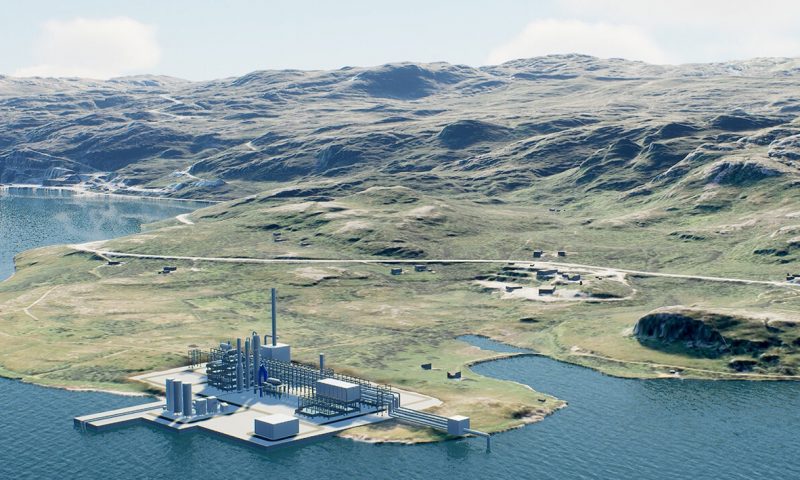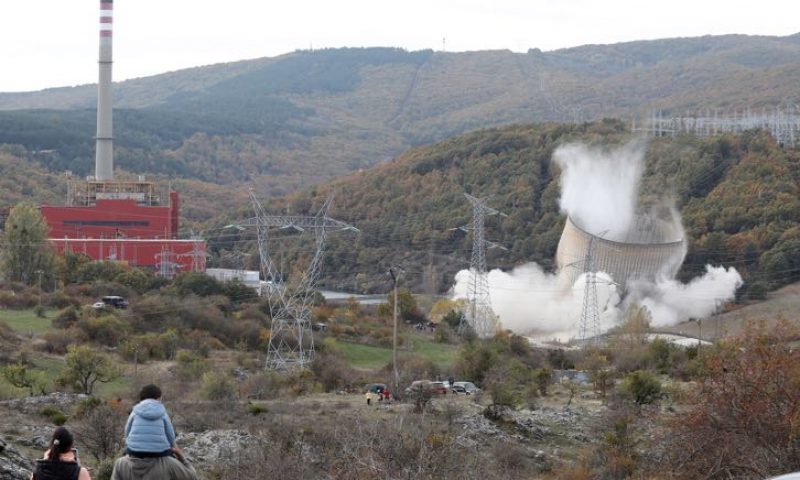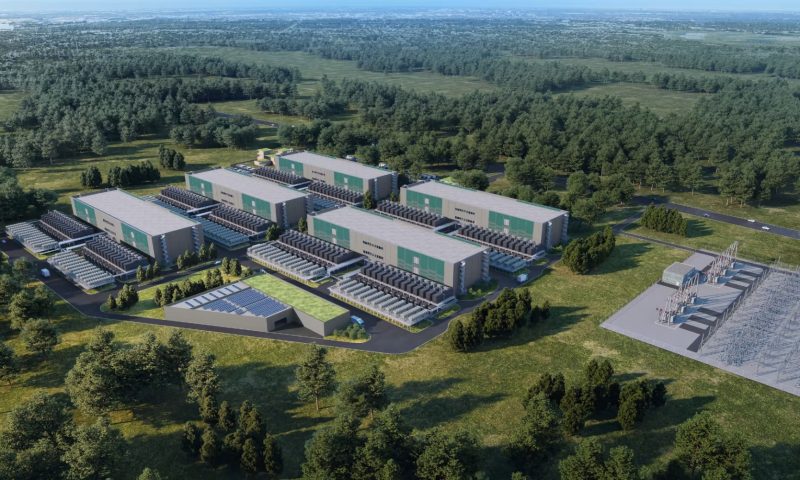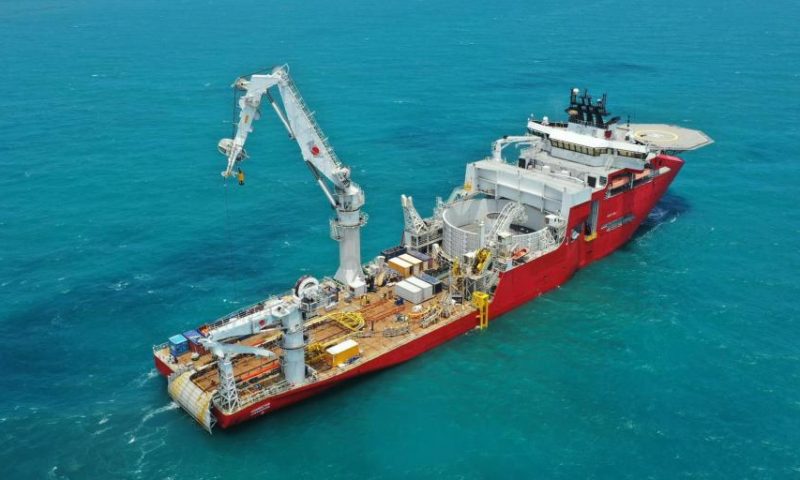
NET9 OPEN OCEAN AQUACULTURE DEMONSTRATOR DESIGN UNVEILED
A group of British and Irish companies have completed the latest phase of work on the Net9 fish farming solution. Net9 aims to address the safety, fish welfare and cost competitiveness challenges associated with bringing aquaculture into open ocean environments. Currently, fish and shellfish farms are located in sheltered bays and inlets, where production capacity is limited to the level that these water bodies can host sustainably. Net9 technology promotor John Fitzgerald highlights that “A move further offshore can pave the way for a new sustainable seafood industry of scale, worth billions of pounds in the UK alone, an economic potential similar to offshore wind. Despite this potential, such offshore aquaculture will occupy a relatively small amount of ocean real estate, potentially fitting within offshore wind turbine arrays”
The project, called “Inflatable Marine Products for Aquaculture Containment Technology (IMPACT)”, shows how novel flexible structures and inflatable beam elements can allow marine fish production at such ocean locations. Fitzgerald contends that “in the same way that Lithium Ion batteries are the key enabler of green transport, we believe that smart flexible structural elements will be the enabler of offshore food production”. IMPACT was funded by the UK Seafood Innovation Fund (See Note 1), building on an earlier feasibility study (See Note 2), which defined a farm system architecture suitable for UK offshore ocean conditions. Administered by the Centre for Environment, Fisheries and Aquaculture Science (Cefas) on behalf of the Department for Environment, Food and Rural Affairs (Defra), the UK Seafood Innovation Fund supports projects which aim to bring new ideas and technology to the UK seafood sector. By supporting projects like IMPACT, the UK Seafood Innovation Fund hopes to facilitate a step-change increase in productivity across the UK seafood supply chain through more sustainable practices.
The IMPACT project was led by Scottish marine engineering company TTI Marine Renewables (TTI), applying their expertise in inflatable structures from previous projects in marine renewables technology (See Note 3). The IMPACT partners have now delivered the Front-End Engineering Design (FEED) for a sub-scale demonstration platform, called Net9-S, suitable for technical demonstration at the European Marine Energy Centre (EMEC – See Note 5) in Orkney. TTI were supported by Irish technology promotor Impact-9 (see Note 4), Orkney test site owner EMEC, as well as blue economy project developer Simply Blue Group (see Note 6), who led work on future commercial offshore site options and consenting matters.
Future commercial offshore platforms based on Net9 will be positioned in water depths of more than 60 m, with submerged containment volumes of up to 125,000 cubic meters, capable of producing up to 3000 tonnes of fish worth about £15 million per annum. However, it was determined in the feasibility phase that an experimental sea trial will first be required in order to test the novel structural elements in a lower risk, unstocked technical demonstration, in advance of rolling out commercial farming operations. The Net9-S system specification and test site operations plan is now completed for this purpose, with the design completed to a level of detail that will allow the procurement of the demonstration project. This will be a reduced scale variant, intended to be deployed unstocked initially and within the reduced scaled ocean environment test sites already available at EMEC (See Note 5). The aim is to build market confidence in the solution before subsequent offshore deployments. Risks, including design-specific Failure Modes and Effects Analysis (FMEA) are being actively managed in order to demonstrate to end-users, regulators and third-party certification bodies that the proposed Net9 technology will be ready for commercial operations in open ocean conditions.
IMPACT Engineering Manager Tom Mackay of TTI notes “This is part of a systematic engineering approach to address technical novelty and undergo carefully managed tests to qualify that new features will perform as desired. The process is similar to offshore renewable systems development, and we have brought to bear expertise from that sector to help Impact-9 manage the risk of adopting their novel structures in the mission-critical Net9 application”. The work has already incorporated numerous third-party expert studies, design assessments and validation steps including laboratory tests and numerical modelling (See Note 7). Subcontractors such as Orwell Offshore were also brought into the project to bring naval architecture and marine operations expertise.
Equally important are the non-technical barriers to future technology adoption including regulatory, environmental and the “social licence” to operate. These were the subject of the work package led by Simply Blue Group who as a developer of floating wind farms is investigating the opportunity of co-locating wind and offshore salmon farms. SBG’s work led to a regulatory and consenting framework for offshore aquaculture in Scotland, which was informed by new studies in priority topics of fish swimming physiology and waste dispersion at the target offshore zones. These scientific studies were delivered with the additional support of the Sustainable Aquaculture Innovation Centre (SAIC). The Managing Director of Simply Blue Aquaculture, Christoph Harwood, said, “offshore salmon farming, including amongst the wind farms, will allow the Scottish salmon farming sector to grow, taking up the lead set by the Norwegians. By doing this the industry can open up new areas for growth without the concerns that are expressed by traditional inshore salmon farming. We look forward to working with the relevant authorities to address the current regulatory and leasing gaps”.
Net9 technology promotor Fitzgerald said that “the most exciting thing about this phase of the work was to see the convergence in design objectives for fish welfare and structural survival in storms. The response of the structure and stocked fish to large storm waves is an unavoidable challenge. But consider that the outer net structure as well as the fish that it contains will fare much better when both move together and in sympathy with the movement of water in ocean swell waves. Designing a containment that reduces the swimming stress on contained fish also results in lower loads on the net structures and efficient structural solutions. This is what we mean when we say ‘Strength in Flexibility’. There remain gaps in knowledge about how fish may want to swim in oscillatory flows brought on by oceanic waves, but our latest work indicates that the swimming effort required by fish to avoid structures need not be any more arduous than for conventional containment at existing exposed coastal sites”.
The next phase of the project will see the building and testing of the full Net9-S hardware leading to the deployment of the full system in an unstocked test deployment. The team are working with potential funders and end users to deliver this phase as well as to plan future commercial project opportunities. Fitzgerald’s company Impact-9 are also looking at using a similar design philosophy for seaweed and shellfish farms.
Contact for further information: info@impact-9.com
For images and permissions, see: Permitted Images
Website: http://www.impact-9.com/technology













